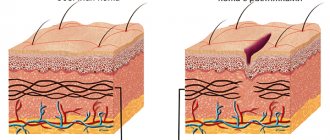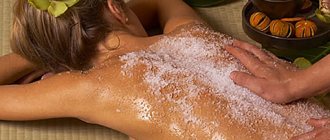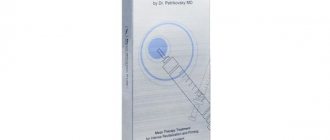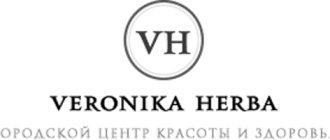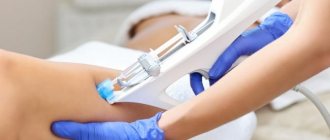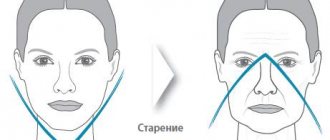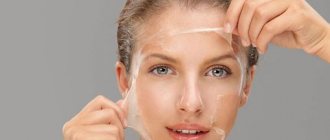Chemical peeling is a procedure aimed at deliberately burning the upper layers of the skin. The purpose of this procedure is to get rid of dead cells that cause aging of the face and give it a stale appearance. Facial burns after peeling may manifest themselves as redness or irritation; this is a normal reaction of the body. But sometimes it happens that a controlled burn manifests itself more strongly, causing great discomfort to the woman. In addition to unpleasant sensations, she feels less attractive, which affects a person’s self-esteem. Before going to a beauty salon, you need to study all possible negative consequences.
How to take care of your face after removing rashes
Although cleansing the pores is effective, it is not enough to get rid of the problem. After all, you will eliminate the manifestations, not the causes. To get rid of acne, you should approach the issue comprehensively.
Preventing acne
First of all, determine what caused the rash on your face: sometimes they become signs of serious diseases. If your health is fine, make adjustments to your daily care.
Keep your skin clean
Why do acne appear after cleansing my face? Perhaps you are neglecting hygiene procedures. Many women do not remove their makeup before going to bed: not only fatigue plays a role, but also dissatisfaction with their appearance. Advertising imposes glamorous images so much that you are not ready to see your face without makeup! But give up the habit of sleeping “in full color.” Wash your face in the morning and evening: 2 times a day is enough.
Use products for your skin type
Many acne treatments contain drugs that dry out the skin. Make sure to moisturize, but look for the “non-comedogenic” label on bottles. Manufacturers offer products for oily, dry and combination skin.
Don't overuse cosmetics
A thick layer of foundation, powder, blush - their use leads to the formation of blackheads and rashes. Apply makeup sparingly and choose non-comedogenic products. Also examine the bottle: look for an oil-free formula with minimal fragrance.
Avoid long periods of sun exposure
Exposure to ultraviolet radiation causes irritation and increases the risk of inflammation and hyperpigmentation. Always use a sunscreen with SPF 30, but make sure the product you choose is non-comedogenic.
Watch your diet
Dermatologists have concluded that chocolate, previously considered harmful, does not cause breakouts. But diet affects the condition of the integument, so exclude fatty and junk foods from your diet. Dairy products and foods with a lot of sugar are also not good for acne. Focus on fruits and vegetables to keep your skin glowing with beauty.
If you're struggling with breakouts on your face, it's important to have faith in the results. Dermatologists assure: some patients are so worried about pimples that they bring themselves to stress
They provoke the development of new acne, and treatment is ineffective. Stop stressing about your appearance and your chances of success will increase.
Treatment
With mild damage to the epidermis, treatment of a burn after chemical peeling is reduced to the use of local products and compliance with all medical recommendations for skin care. A deep burn requires more serious treatment.
Drugs
In case of superficial damage, ointment for burns after peeling is prescribed by the cosmetologist who performed the procedure.
Usually these are regenerating and anti-inflammatory drugs:
- Panthenol. Foam, cream and ointment based on dexpanthenol have a pronounced regenerating and moderate anti-inflammatory effect. In the first days after peeling, it is better to use cream and foam, and at subsequent stages of healing - a thicker ointment. It is recommended to treat the skin at least 4 times a day. Analogs: Bepanten, Pantestin, D-panthenol.
- Bepanten Plus. A cream based on dexpanthenol and chlorhexidine has a regenerating and antiseptic effect, accelerates healing, and prevents the development of infectious complications. Used 1-2 times a day (maximum daily dose is 5 g).
- Elokom. A hormonal product based on mometasone is available in the form of ointment, cream, and lotion. It has a pronounced anti-inflammatory, antipruritic and anti-edematous effect. Prescribed for severe irritation and itching of the skin. Use no more than once a day.
For deep lesions accompanied by the appearance of blisters, you should consult a doctor. A specialist will assess the degree of damage to the skin and tell you how to get rid of the burn and what medications to use.
What is peeling
Professional facial peeling is popular because it helps get rid of many skin imperfections.
These include:
- acne;
- wrinkles;
- decreased tissue tone;
- hyperpigmentation;
- scars and cicatrices.
With the help of peeling, the skin is cleansed, the functioning of the sebaceous glands is normalized and the complexion is evened out.
In addition, this cosmetic procedure has the following effect:
- Evens out skin texture;
- Stimulates collagen production;
- Relieves inflammation;
- Improves complexion;
- Starts the process of cell division and regeneration.
There are several types of professional peeling:
- chemical;
- hardware;
- physical;
- mechanical;
- laser.
These types differ in depth and principle of influence, so they are prescribed taking into account the skin type and individual problem. The greater the depth of impact, the greater the risk of undesirable consequences.
Peeling can be:
- Surface;
- Superficial – middle;
- Median;
- Deep (carried out in a hospital setting).
Superficial peeling is considered safe, since during such a procedure only the top layer of dead skin cells is removed. Suitable for eliminating minor skin defects such as redness, slight pigmentation and others.
Medium facial cleansing involves applying special means or devices to the deeper layer of the epidermis in order to activate internal processes. Indications for it include facial wrinkles, nasolabial folds and acne marks.
Deep peeling or facial resurfacing is a radical procedure during which the epidermis is removed along with the germ layer. Indications for it are deep wrinkles, skin folds, scars, scars, acne marks, etc. After such a procedure, side effects or negative consequences most often occur.
PROS AND CONS OF THE PROCEDURE
The advantages of exfoliation are determined by the complexity of its action:
- Scars disappear or become less noticeable;
- Access to the papillary and reticular layers of the epidermis is opened, which stimulates restoration processes;
- The massage effect of mechanical peelings has a positive effect on blood circulation.
However, like any cosmetic procedure, peelings for stretch marks have their disadvantages:
- Swelling in the affected areas;
- Redness;
- Peeling;
- Bruising;
- Long recovery period when using any deep peels, as well as laser and chemical peels of medium impact.
We recommend: PEELING OF THE INTIMATE AREA in the salon and at home
Separately, it should be said about contraindications. Peeling is not recommended in the following cases:
- Diseases of the skin and blood vessels;
- Open wounds;
- Allergic reactions to the components of the exfoliating composition;
- Papillomas and suspicious moles;
- The use of certain hormones and medications that reduce blood viscosity;
- Keloids;
- Pregnancy (in consultation with your doctor).
Prevention measures
In order to prevent facial redness and the appearance of age spots, it is important to follow a number of rules and prepare in advance for the procedure. In cases where small spots appear after the first session, subsequent procedures should be abandoned and the cosmetologist should be informed of the side effect.
In cases where small spots appear after the first session, subsequent procedures should be abandoned and the cosmetologist should be informed of the side effect.
Before and after the procedure, it is important to protect your facial skin from exposure to ultraviolet rays for a week. To do this, apply protective cream before going outside.
From 11 a.m. to 5 p.m., you should completely avoid exposure to the sun, as at this time you can get sunburn on injured skin. When it appears, ointments, masks and creams with a cooling effect are used.
For young skin and in the absence of serious problems, it is better to choose a light superficial peeling. 2 procedures per month are enough. In this way, it is possible to remove dead tissue and eliminate the appearance of age spots, since the effect is only on the upper layer of the epidermis.
Throughout the entire recovery period, it is important to refrain from using cosmetics, especially foundation and liquid powder. They clog pores, the skin stops breathing, which leads to the appearance of pigmentation
In the first 2-3 days after peeling, any exposure to the facial skin should be avoided, as it is irritated. There are microcracks on the surface through which infection can penetrate. As a result, not only redness will occur, but other side effects and complications will also appear.
Facial peeling is a popular skin cleansing procedure. But only correct implementation of the procedure, compliance with the rules for preparation and care after sessions will significantly reduce the risk of side effects in the form of redness and the appearance of age spots. When they appear, you must immediately contact the cosmetologist who performed the procedure.
Risk of burn wounds from peeling
The appearance of burn wounds after peeling can cause unpleasant consequences. The danger of the procedures lies in:
- Infection . With a burn wound, the integrity of the skin is compromised. A favorable environment for the proliferation of microbes arises. In this case, inflammation will increase and ulcers will appear.
- Pigmentation . Typically, acid peels help deal with freckles and age spots. But when a burn occurs, the effect will be the opposite.
- Scars . As the skin heals, scars may appear. Most often they appear in places where there are creases.
In addition, there may be:
- cyst formation;
- exacerbation of chronic pathologies;
- epidermal atrophy;
- the appearance of a demarcation line.
The progression of complications is indicated by persistent symptoms that last more than 2-3 days after the procedure.
Predicted side effects
The peeling process occurs by exposing the skin to a laser. As a result, the body experiences very severe stress. Old cells are removed, and the skin is renewed thanks to natural processes. Because dead cells accumulate in the pores and prevent the skin from breathing normally. Thus, by removing problem layers, the skin is again saturated with nutrients and oxygen.
The skin may experience consequences after facial peeling, and the laser treatment area will begin to peel off. This is a natural process. But for each predicted side effect there is a separate treatment method. Don't panic; it's better to follow your doctor's instructions.
Erythema
Redness of the area of skin that was treated with the laser. And the stronger the impact of the beam, the more clearly the symptoms will appear. It is also necessary to take into account the sensitivity of the patient's skin. People with this diagnosis are susceptible to this complication.
If the clinic uses a superficial technique that involves fruit acids, then the redness lasts for several hours. But after a deep Jessner cleanse, these symptoms do not go away for two to three days.
Erythema after using medium acid exfoliations can last from 3 to 5 days. But there are methods after which redness of the skin can be observed from a week to a month. For example, deep cleansing or dermabrasion.
Edema
They appear due to the structural features of blood vessels. If they have increased permeability, then after laser treatment, fluid begins to release and accumulate from the vessels, which forms edema. Most often, symptoms are observed on the face, where there are sensitive areas.
However, the swelling itself does not appear immediately. The patient begins to notice complications the next day. Sometimes symptoms appear after 3 days.
To avoid this effect, the cosmetologist must calculate the harmless concentration of the acidic product. But for this you need to have a lot of experience.
Peeling
This is a necessary side effect. After treating an area of skin with a laser, cells begin to divide and renew themselves. Therefore, the more intense the peeling, the better for the skin. As a result, the upper layers of the epidermis begin to peel off and become very itchy. But at the same time, it is forbidden to touch it or rip off the sagging areas.
Cosmetologists recommend rubbing in special preparations that will heal wounds and moisturize the skin at the same time.
Darkening of the skin
As the chemical peeling was carried out, the skin begins to darken in some areas. But this is a natural process and there is no reason to worry. These are formations of old cells that will disappear after exfoliation.
Skin hypersensitivity
The effects of peeling can cause severe pain when touched. The skin becomes very sensitive and the patient feels this even when washing with warm water or while putting on makeup.
This complication manifests itself individually. Sometimes it ends in a week, and sometimes the symptoms last up to a year. This occurs because soft tissue loses its protection after exfoliation. Sensitivity increases and the UV barrier decreases.
In this case, doctors recommend applying sunscreen before going outside on a bright sunny day or performing the procedure in winter or autumn, when ultraviolet radiation is not so active.
What are the dangers of chemical burns?
Before carrying out the procedure, be sure to ask your specialist about the product, as well as its concentration. Often such inattention leads to severe burns, which leave not only unpleasant impressions from the session, but marks on the skin. The acid content in the product should be no more than 30%. For delicate skin, this figure can be reduced to 20%. A large concentration cannot lead to a quick, much less safe, result. On the contrary, such products can cause severe skin burns with blisters. Why a severe burn is dangerous:
- Often an infection appears in damaged skin. Burned areas are more susceptible to the spread of pathogens. You can get rid of them only by regularly treating the area with antibiotic ointment.
- The appearance of pigmentation, unfortunately, is the most common side effect. The area of damaged skin first turns red, then turns brown, and then yellow, which is difficult to remove from the skin. Pigment spots do not appear immediately, but after some time. For example, after being in the sun without sunscreen.
- Scars on the skin may remain after the formation of crusts; you cannot get rid of such marks with the help of cream. Only laser facial resurfacing will help here.
Important! If a facial burn causes severe pain, the skin is hot and covered with blisters, you can’t wait!
It is necessary to take antiallergic drugs that will relieve itching, as well as painkillers, as quickly as possible. It is not recommended to delay going to the doctor.
Masks after cleansing your face at home
After such a deep cleansing of the face, many clients are interested in how to soothe the skin, or how to close the pores? Experienced cosmetologists recommend, and even consider it necessary, the regular use of special masks.
However, in order for them to be most effective, it is important not to conduct unjustified experiments on the skin and adhere to simple rules
Rules for using masks
It is important not to try all the praised products in a row, but to make only those masks that contain medicines and antiseptics, apply a mask recommended by your cosmetologist for several days after cleansing, any new mask must first be tested on the face and applied to the skin in a thin layer , if the consequences of facial cleansing are normal, then masks made from vegetables or fruits are great, do not overdo it with masks: they should be used once every 2-3 days. Using these tips, restoring your skin with masks will only bring pleasant results.
Using these tips, restoring your skin with masks will only bring pleasant results.
Recipes for healing masks
- Bodyagi mask. This unique remedy effectively resolves small hematomas. Contraindicated for very dry skin.
- Mask based on egg white and lemon juice. The effect is excellent narrowing of pores.
One of the most effective is a cucumber mask. Before applying it, you should wash your face with warm water to open the pores. Then you need to take a medium-sized cucumber and cut it into slices. They should be applied tightly to the skin of the face and kept for about an hour. Anti-inflammatory masks based on blue clay. Supplements can be selected depending on individual tolerance. You need to keep it on your face for about half an hour. Then rinse with warm water and apply moisturizer to the skin. A sour cream mask will not only be therapeutic, but also pleasant. It needs to be rubbed into the skin with light circular movements, because in this way a massage effect is achieved. It is recommended to leave sour cream on the face for approximately 45 minutes and then rinse with warm water. Mask made from natural coffee grounds. Apply it to your face for 20 minutes. Then rinse as usual with warm water and pat your face dry with a towel. Mask made from preheated vegetable oil. The exposure time of such a mask is approximately 20 minutes. After time, the oil should be washed off with warm water and wipe your face with a soft towel. The effect is velvety and delicate skin. Nourishing mask made from yogurt and yeast. To do this, you need to mix the yeast and yogurt to the consistency of thick sour cream. Next, you need to apply this composition to clean skin with light massage movements and keep for about half an hour. Then wash off the mask with warm water.
All it takes is just 5 minutes of time and your desire! And the effect won’t take long!
How long do burns last?
Depending on the type of peeling, skin restoration can take from 2 days to 4 weeks. For example, skin damage after a glycolic or fruit peel should go away within 3 days. Damage to the stratum corneum should also heal within a few days; fortunately, damage to the stratum corneum occurs quite rarely with this procedure.
Important! If during this time the skin does not heal, and the discomfort only intensifies, then it’s time to seek help from a cosmetologist.
Perhaps he will prescribe burn gel or special foams for treatment.
Who is to blame for complications after peeling?
Any operation is a very responsible matter. It is simply unacceptable for an amateur to undertake such work. But errors can occur not only on the part of the doctor. Patients often do not follow the instructions that they are required to read. For example, with some complications it is prohibited to drink alcohol. But some patients think that nothing will happen with one glass of cognac or a can of beer. Then in the morning, after one serving, problems begin. And the money spent on the operation simply goes down the drain.
While some types of procedures can be performed by a novice, other types of surgery should only be performed by an experienced cosmetologist. For example, calculate the acid concentration that is harmless to the skin.

